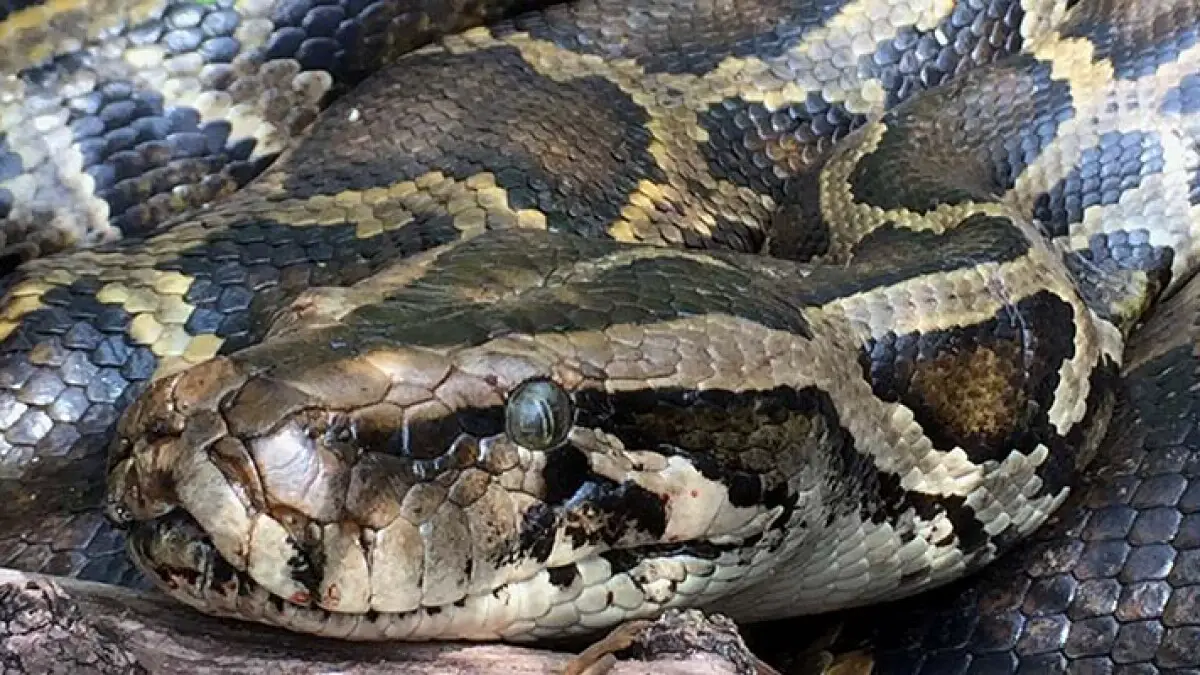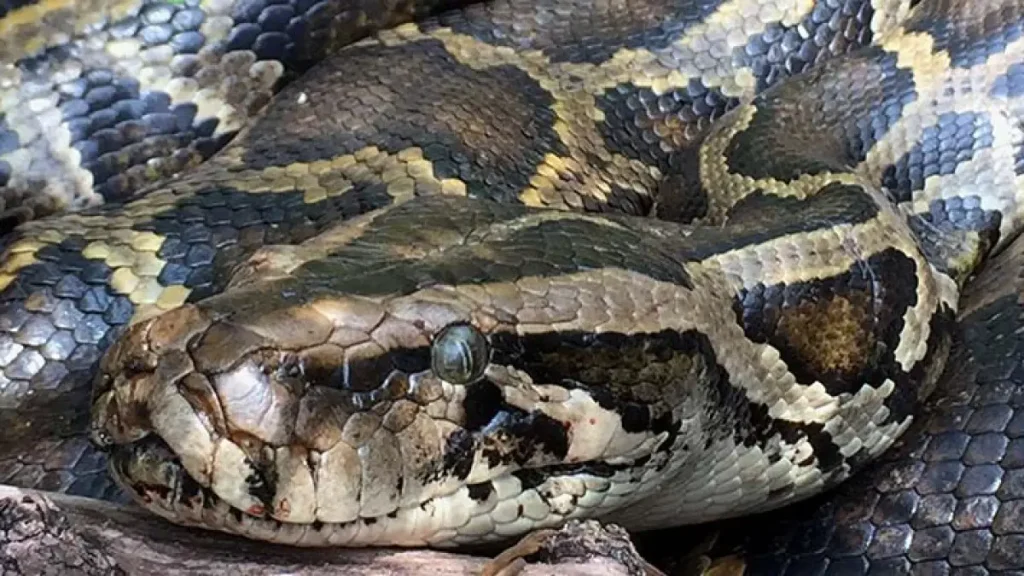Burmese pythons, native to Southeast Asia, have become a major invasive species in Florida. These large snakes can grow up to 23 feet long and have been known to prey on native species like birds, mammals, and reptiles. If you’re wondering how to get rid of Burmese pythons, you’re not alone. In this article, we’ll explore some of the most effective methods for controlling and removing these dangerous predators from your property.
From trapping and removal to hunting and euthanasia, there are several approaches to tackling the Burmese python problem in Florida. However, it’s important to note that these methods require careful planning and execution to be effective and safe. Whether you’re a homeowner, a wildlife manager, or a concerned citizen, understanding how to get rid of Burmese pythons is critical for protecting the state’s delicate ecosystem and preserving native wildlife populations.
If you’re dealing with Burmese Pythons, the best way to get rid of them is by using traps. You can set up traps around areas where you’ve seen them and use bait to lure them in. Once they’re trapped, you can either release them far from your property or call a professional to remove them. Avoid handling them on your own as they are dangerous and can cause harm.

How to Get Rid of Burmese Pythons: A Guide to Effective Removal
Burmese pythons are non-native invasive species that pose a significant threat to Florida’s ecosystem. These large constrictor snakes can grow up to 23 feet long and weigh more than 200 pounds. They have become a menace to Florida’s wildlife, including small mammals, birds, and reptiles. In this guide, we will discuss effective methods for getting rid of Burmese pythons.
1. Physical Removal
Physical removal is the most effective way to get rid of Burmese pythons. If you encounter a python, use caution and do not attempt to handle it. Instead, call a licensed wildlife removal professional to capture and remove the snake. These professionals have the necessary training and equipment to safely remove the snake without harming it or the surrounding environment.
If you are a licensed python hunter, you can use certain tools to capture and remove the snake. These tools include snake hooks, tongs, and traps. When capturing a python, it is important to use proper handling techniques to avoid injuring the snake.
2. Use of Traps
Traps are another effective way to get rid of Burmese pythons. There are several types of traps available, including live traps and lethal traps. Live traps allow for the capture and relocation of the snake, while lethal traps kill the snake.
When using traps, it is important to place them in areas where pythons are known to be active. This includes areas near water sources, such as canals and ponds. The traps should be checked regularly to ensure that any captured pythons are removed promptly.
3. Canine Detection
Canine detection is a relatively new method for detecting Burmese pythons. Specially trained dogs can detect the scent of pythons, making it easier to locate and capture them.
Dogs are particularly effective in detecting pythons in dense vegetation, where they may be difficult to spot. This method is often used in conjunction with physical removal or trapping to increase the chances of success.
4. Thermal Imaging
Thermal imaging is another effective method for detecting Burmese pythons. This technology uses infrared cameras to detect heat signatures, making it easier to locate pythons that are hiding in vegetation or other areas.
Thermal imaging is particularly effective at night when pythons are more active. This method is often used in conjunction with physical removal or trapping to increase the chances of success.
5. Habitat Modification
Habitat modification is a long-term solution for getting rid of Burmese pythons. This method involves modifying the environment to make it less hospitable for snakes.
One way to modify the environment is by removing dense vegetation and debris, which provides cover for pythons. Another way is by installing snake-proof fencing around areas where pythons are known to be active.
6. Use of Chemical Repellents
Chemical repellents are another option for getting rid of Burmese pythons. These products are designed to create an unpleasant smell or taste that discourages pythons from entering a particular area.
While chemical repellents can be effective, they should be used with caution. Some products may have negative effects on other wildlife or the environment.
7. Education and Awareness
Education and awareness are important tools for getting rid of Burmese pythons. By educating the public about the dangers of these snakes and how to identify them, more people will be able to report sightings and take appropriate action.
Awareness campaigns can also help to promote responsible pet ownership and discourage the release of pet pythons into the wild.
8. Benefits of Removing Burmese Pythons
Removing Burmese pythons from the Florida ecosystem has several benefits. These snakes are known to prey on a variety of native species, including small mammals, birds, and reptiles. By reducing the number of pythons in the wild, we can help to protect Florida’s native wildlife.
In addition, reducing the number of pythons can help to protect humans from potential attacks. While pythons are not aggressive towards humans, they can be dangerous if cornered or threatened.
9. Burmese Pythons vs. Native Species
Burmese pythons are non-native to Florida and have no natural predators in the state. This means that they can quickly become a threat to native species.
Pythons are known to prey on a variety of native species, including mammals, birds, and reptiles. They have been linked to declines in populations of several native species, including raccoons, opossums, and rabbits.
10. Conclusion
Burmese pythons are a significant threat to Florida’s ecosystem. Effective methods for getting rid of these snakes include physical removal, trapping, canine detection, thermal imaging, habitat modification, and the use of chemical repellents.
Removing pythons from the Florida ecosystem has several benefits, including protecting native wildlife and reducing the risk of attacks on humans. By raising awareness and taking appropriate action, we can help to reduce the impact of Burmese pythons on Florida’s environment.
Frequently Asked Questions
Burmese pythons are invasive species that have become a major problem in Florida and other parts of the United States. These snakes can grow up to 20 feet long and can prey on a wide range of animals. If you’re looking for ways to get rid of Burmese pythons, then you’ve come to the right place. Here are five frequently asked questions about how to get rid of Burmese pythons.
Q: What methods can be used to control Burmese pythons?
There are several methods that can be used to control Burmese pythons. One of the most effective methods is trapping. Traps can be set up in areas where the snakes are known to live and feed. Once trapped, the snakes can be removed and either relocated or euthanized. Another method is to use trained dogs to find and capture the snakes. This method is particularly effective in areas where the snakes are difficult to locate. Finally, some experts recommend using a combination of methods, including trapping, hunting, and the use of chemical repellents.
It’s important to note that some of these methods may be illegal in certain areas. For example, in some parts of Florida, it’s illegal to use traps to capture Burmese pythons. Before attempting any of these methods, be sure to check with local authorities to ensure that you are not breaking any laws.
Q: What should I do if I encounter a Burmese python?
If you encounter a Burmese python, it’s important to stay calm. These snakes are not aggressive towards humans and will generally try to avoid confrontation. If you see a snake, do not attempt to capture or kill it. Instead, slowly back away and leave the area. If the snake is in a populated area, contact local authorities immediately so they can take the necessary steps to remove the snake.
If you’re in an area where Burmese pythons are common, it’s a good idea to take precautions to avoid encounters. Avoid walking in areas with tall grass or dense vegetation, and keep pets on a leash when outside. If you’re hiking, stay on designated trails and make noise to alert snakes to your presence.
Q: Can Burmese pythons be relocated?
Yes, Burmese pythons can be relocated. However, relocation is not always the best option. When snakes are relocated, they can become disoriented and may have trouble finding food and shelter. In addition, relocated snakes can pose a threat to other ecosystems if they are introduced into new areas.
If you do decide to relocate a snake, it’s important to do so in a humane and responsible manner. Be sure to release the snake in an area that is suitable for its survival, and be aware of any local laws or regulations regarding relocation of wildlife.
Q: Are there any natural predators that can control Burmese pythons?
Burmese pythons have few natural predators in their native range in Southeast Asia. However, in the United States, some animals have been known to prey on Burmese pythons. These include alligators, crocodiles, and some birds of prey.
While natural predators can help to control Burmese python populations, they are not a reliable method of control. In addition, some predators, such as alligators, can pose a risk to humans if they become accustomed to feeding on pythons.
Q: What can be done to prevent the spread of Burmese pythons?
The best way to prevent the spread of Burmese pythons is to stop their introduction into new areas. This can be done by regulating the import and sale of exotic animals, and by educating the public about the dangers of releasing pets into the wild.
In addition, if you live in or visit areas where Burmese pythons are common, you can take steps to prevent their spread. This includes checking your vehicle and gear for snakes before leaving an area, and reporting any sightings to local authorities. By working together, we can help to prevent the spread of this invasive species and protect our native wildlife.
Burmese Python Research & Removal | Ian Bartoszek
In conclusion, getting rid of Burmese pythons is no easy feat, but it can be done. The first step is to be aware of their presence and report sightings to the proper authorities. It’s also important to never attempt to handle or capture these snakes on your own, as they can be dangerous.
Another effective method is to use specially trained dogs to detect and locate the pythons, which can then be safely captured and removed. In addition, there are ongoing efforts to develop new methods and technologies to control the python population in Florida.
Overall, the key to successfully getting rid of Burmese pythons is to work together as a community and take proactive measures to prevent their spread. By staying vigilant and taking action, we can help protect our environment and native wildlife from these invasive predators.


